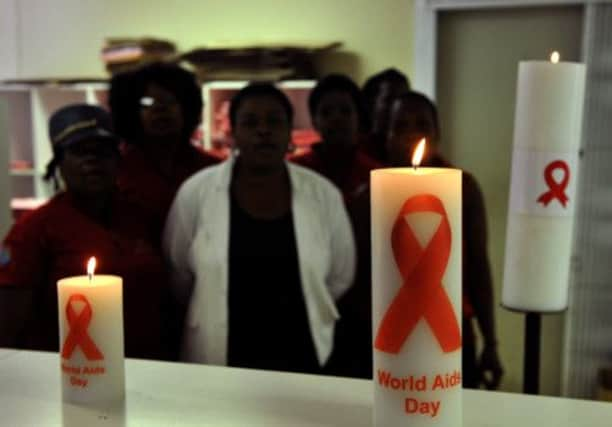George Valiotis: HIV must remain a priority


Though the sight of red ribbons on jackets might be less common than it once was, the day is most certainly still relevant. More than 35 million people in the world have HIV – the virus that can cause Aids – and it’s estimated that around the same number have died since the epidemic began. There are more people than ever living with HIV, globally and in Scotland.
This year, once again, it’s fantastic to see Scotland taking World Aids Day seriously. Campaigners, charities and many health boards across Scotland are promoting the day with red ribbons, community events, awareness campaigns, and more than 50 landmarks and buildings lighting up in red, from the SSE Hydro in Glasgow to as far north as Clickimin Broch in Shetland.
Advertisement
Hide AdAdvertisement
Hide AdIt’s commendable that organisations across sectors are working together to mark the day, and we’re delighted to be involved. But while being proud of Scotland’s efforts this weekend, I believe we should be deeply concerned that a quarter-century since the very first World Aids Day, many Scots simply do not know the basic facts about HIV and AIDS.
During the 1980s, Scotland found itself in the grip of an Aids epidemic. New HIV infections were rife, particularly among Edinburgh’s population of injecting drug users, with data suggesting that as many as 60 per cent had HIV by 1986. The pioneering work of doctors and policy makers in Scotland to introduce needle exchange programmes in Edinburgh – and later Dundee and Glasgow – set a global standard of excellence. These strategies helped to slow the rates of new infections significantly, and well-resourced public awareness campaigns continued for some years. But fear and misunderstanding about the reality of HIV – how it’s passed on, what life for someone with the virus is like and who is at risk – remained firmly entrenched.
Twenty-five years on, though, the spotlight has faded, new infections are still diagnosed at a rate of close to one every day in Scotland, and there are more people living with HIV than ever before. People living with HIV still face discrimination and fear, fuelled by the same misunderstanding and ignorance.
We know that ensuring the public understand the facts about HIV is crucial to keep new infections low and to reduce misconceptions and stigma about what it is like to live with HIV. And the facts aren’t complicated: keep yourself free of HIV by using condoms and not sharing needles; know that you can’t catch HIV from normal day-to-day contact such as shaking hands or kissing, or even from a toilet seat; and while there’s no cure, when people with HIV receive effective treatment they can live long, active lives.
The difficulty now, in 2013, is keeping HIV in the forefront of people’s minds, so we can be sure they know the facts. We must all know that HIV hasn’t disappeared, it’s not gone away, and it can affect almost everyone.
It’s particularly important to reach young people with this message, many of whom have little idea of the history we have here in Scotland in the fight to contain HIV and Aids. Resistance to properly teaching our children the facts about HIV, and how to keep themselves safe, has meant that more and more young people are acquiring the virus. Ensuring that all children and young people have comprehensive sexual health education, which includes information and facts about HIV, is one obvious way we can address this in Scotland.
The need to understand these basics doesn’t just include young people and the general public. Decision makers in Scotland continue to sideline HIV as a health issue only, and a minority one at that. We believe it is crucial that those making decisions within the NHS, the Scottish Government, local authorities and elsewhere appreciate the complex and wide-ranging needs that people living with HIV have, and that they are not defined by the virus they carry.
It’s also important to recognise that while vast improvements in treatment have improved quality of life for many, they have also resulted in a population of people with HIV in Scotland that is growing older. As resources across the public services they depend on become increasingly constrained, we must all work together to find new approaches to meet their needs.
Advertisement
Hide AdAdvertisement
Hide AdThe Scottish Sexual Health and Blood Borne Virus Framework will end in 2015. So now is precisely the time to review progress across the past 25 years, identify where improvements are needed and to bring everyone affected together to ensure that HIV – and the needs of those it affects – is truly a priority for Scotland, rather than a forgotten, ignored epidemic. «
• George Valiotis is chief executive officer for HIV Scotland